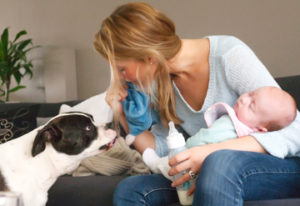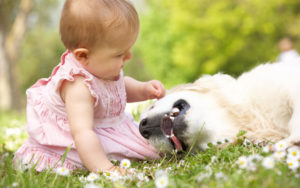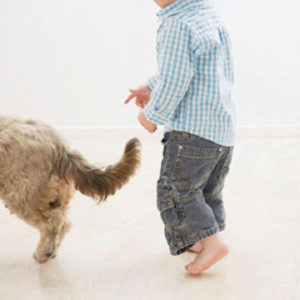Dog Proofing your child/dog
Dog Proofing Your Child / Person
By Delores Burton—K9 Campus

First and Formost: Don’t look at the dog. Don’t touch the dog. Don’t talk to the dog. Move forward, claim your space and let the dog sniff. Just because a dog comes up to you, doesn’t mean he wants you to pet him. It just means he wants to sniff you. That’s how they get to know you.
When entering a room where a strange dog is, do not approach straight on. Turn your body slightly to the side. This is a non-confrontational position, telling the dog you are not a threat to him.
Many children don’t realize that some dogs can be dangerous if approached improperly, or dogs that are not properly socialized. What seems like a loving hug and kiss to your child can be threatening to some dogs, thereby causing them to growl or bite.
You will want to immediately dog proof your child to prevent a bite, or worse. Use common sense. Show your child by example. Anticipate problems. Teach your child to move slowly.
Do not jump up and down or scream loudly.
Tell your child do not raise his arms over his head. This will make the dog want to jump on him.
Tell him clearly not to try to pull the dog out from underneath the table, as they are likely to bite.

Sit down with your child and the dog for training sessions and teach your child behaviors that will help the dog to relax around him, like scratching their bellies, gently petting or massaging their chest or under the chin, or giving them treats. Teach the dog tricks together. This will help them bond.
An adult must always be present. Never leave your child alone with a dog, even if you think you know the dog. A dog can be friendly with an adult but be afraid or aggressive to a smaller child.
Also let him know not to run away from a dog. Most dogs will chase a moving object. Running away from a dog kicks in their prey drive. Same with riding a bike around the dog. If he needs to get away from a dog, show him how to slowly back away from the dog.
Teach your child to let the dog come up to him, rather than your child running up to the dog.
A dog learns about his world by sniffing. Don’t discourage sniffing unless it gets obnoxious. A dog can smell a bush and know how many dogs have been there, if they are male or female, neutered or spayed, in heat or not, etc.

Beware of a dog that does not sniff and just stares. This is a dog that is ready to strike. Be aware of a dog with his tail straight up in the air like an antenna.
Socially acceptable eye contact for a dog that you don’t know is no more than 2-3 seconds. Any longer than that, the dog may perceive it as a challenge or a threat.
Show him the proper way of petting your dog. Teach him to pet the dog underneath the neck, as they will be more receptive. Don’t let him kiss the dog in the face.
No wrestling, chase or tug-o-war games.
Don’t let him hang on the dog or put his arms over the top of the dog’s head or pull on their ears or tails. Don’t let him hit the dog or throw things at them. Don’t pester them when they are trying to sleep or eat. Don’t startle them, especially while they are sleeping.
Don’t pet a growling or barking dog. Don’t pet a dog who backs away or has his tail tucked between his legs, or one that is trembling.
Always ask permission from the owner if it is safe and okay for your child to pet their dog.

Usually, if a dog has his mouth open in a relaxed fashion and his tongue is hanging out, he probably will not bite.
This is not something that should be taken lightly. It is well worth the time and effort it takes to dog proof your child. For your child’s sake and your peace of mind, do it!
